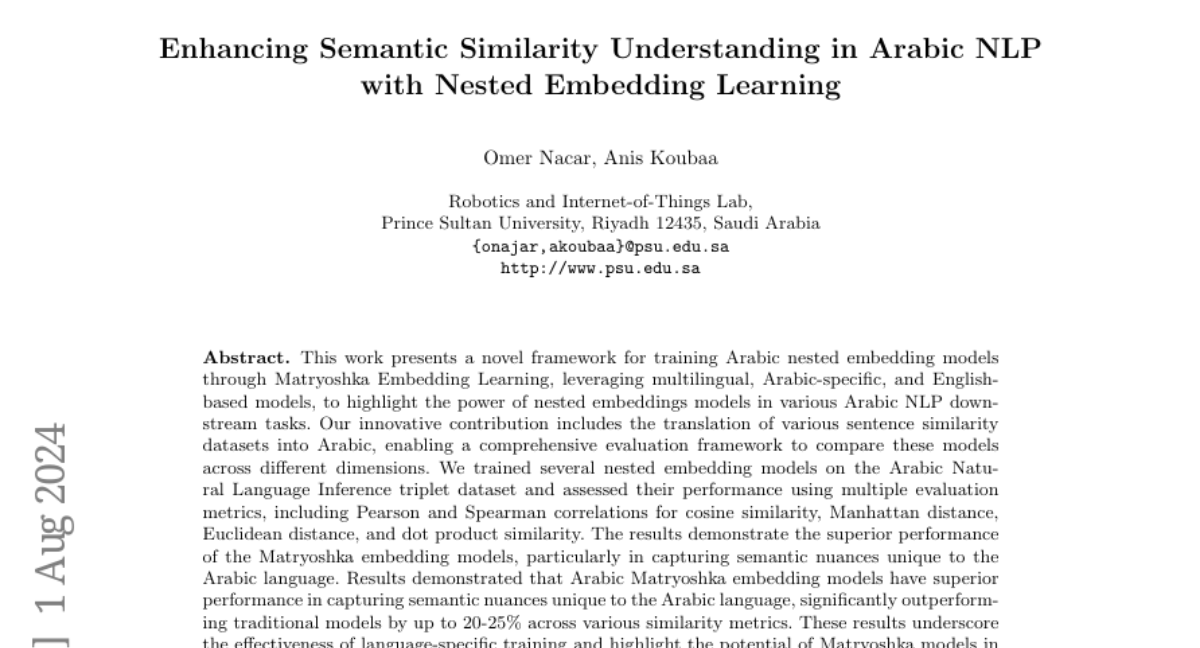Enhancing Semantic Similarity Understanding in Arabic NLP with Nested Embedding Learning
Omer Nacar, Anis Koubaa
2024-08-02

Summary
This paper discusses a new approach called Nested Embedding Learning to improve how Arabic natural language processing (NLP) models understand the meaning of words and phrases. It focuses on creating better models that can capture the unique aspects of the Arabic language.
What's the problem?
Arabic NLP has faced challenges because existing models often struggle to understand the complexities of the Arabic language, which is rich in meaning and structure. This can lead to poor performance in tasks that require deep understanding, such as determining how similar two sentences are or answering questions based on text.
What's the solution?
The authors introduce a framework that uses Matryoshka Embedding Learning, which allows models to learn from multiple languages and adapt to the specific features of Arabic. They created two new datasets for evaluating sentence similarity and trained several models on these datasets. The results showed that their new nested embedding models performed significantly better than traditional models, improving accuracy by 20-25% in understanding semantic similarities in Arabic.
Why it matters?
This research is important because it enhances the ability of AI systems to process and understand Arabic text more effectively. By developing better tools for Arabic NLP, this work can help improve applications like translation services, chatbots, and educational tools, making them more useful for Arabic speakers.
Abstract
This work presents a novel framework for training Arabic nested embedding models through Matryoshka Embedding Learning, leveraging multilingual, Arabic-specific, and English-based models, to highlight the power of nested embeddings models in various Arabic NLP downstream tasks. Our innovative contribution includes the translation of various sentence similarity datasets into Arabic, enabling a comprehensive evaluation framework to compare these models across different dimensions. We trained several nested embedding models on the Arabic Natural Language Inference triplet dataset and assessed their performance using multiple evaluation metrics, including Pearson and Spearman correlations for cosine similarity, Manhattan distance, Euclidean distance, and dot product similarity. The results demonstrate the superior performance of the Matryoshka embedding models, particularly in capturing semantic nuances unique to the Arabic language. Results demonstrated that Arabic Matryoshka embedding models have superior performance in capturing semantic nuances unique to the Arabic language, significantly outperforming traditional models by up to 20-25\% across various similarity metrics. These results underscore the effectiveness of language-specific training and highlight the potential of Matryoshka models in enhancing semantic textual similarity tasks for Arabic NLP.